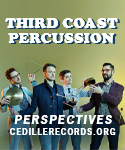Back in the 1990s it was fashionable for classical musicians to call their concerts or CD releases “The X Project” or “The Y Project”. I thought this fad had long passed into history, yet apparently it refuses to die. Exhibit A: Yundi’s new Mozart release called “The Sonata Project: Salzburg”. A more appropriate title would be “Yundi the Mozart Machine”, or “The Mozart Mannequin”. Have you seen piano performances on YouTube generated by artificial intelligence? They’re generally note perfect and soulless, which pretty much describes Yundi’s Mozart.
The A major K. 331 sonata’s first-movement Theme and Variations features unified tempo relationships and uniform characterization from one section to the next. The similarly impersonal Menuetto’s steady tempo and tapered phrase ends sound less interpreted than generated by data processing. Not one note of the Rondo Alla Turca is out of place, but where’s the music’s heel kicking joy and Janissary sensibility?
Most notable performances of the A minor K. 310 outer movements feature myriad inflections that illuminate the music’s harmonic tension and tragic overtones. Yundi, by contrast, does little more than read the score in tandem with an inaudible yet ever-present click track. Granted, Yundi’s dynamic and expressive range open up in the C minor Fantasia, and the C minor K. 457 sonata Allegro assai finale offers beautiful contrasts in articulation that would have helped to raise the pianist’s Adagio movement from generic to operatic.
I frankly expected more from Yundi’s Mozart, given the stylistic surety and authority he brought to his DG recording of the Beethoven Moonlight, Pathétique, and Appassionata sonatas, not to mention the sharpness and vitality of the Mozart C major K. 330 sonata included in his 2005 Vienna Recital on DG.
































